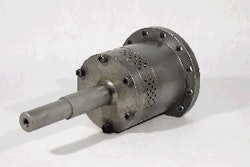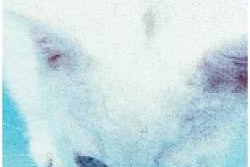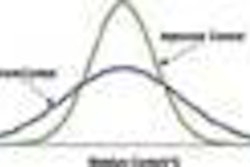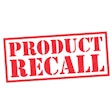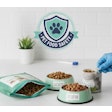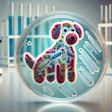Regulations in the European Union (EU) affecting the manufacture, marketing and import of petfoods often seem to be both bewildering and confusing. First, it is important to understand that there are three regulatory bodies within the EU: The Council, The European Parliament (EP) and The European Commission (EC). All have the power to produce legislation, but in most cases the legislation is jointly sponsored by at least two of these bodies.
It is also worth pointing out the importance of the European Food Safety Authority (EFSA) who, despite having no power to write legislation directly, is very influential with the three regulatory bodies. There are also three kinds of documents which define regulatory requirements: directives, regulations and decisions; all of which are published in the official organ of the EU, The Official Journal of the European Union (OJ).
Regulations vs. directives
It is not the purpose of this article to explain the modus operandi of the EU or the subtleties of the documentation. Suffice it to say that in the area of petfoods, we are seeing an increasing move to the use of regulations rather than directives. This means, in simple terms, that the regulation becomes effective and entirely binding in all Member States of the EU simultaneously (directives do not achieve this).
It is important to realize that for the most part (99%+), the regulatory requirements for the manufacture, marketing and import of petfoods into the European Union are harmonized across all 25 Member States. This includes ingredients, additives, undesirable substances, labeling and import requirements. Each of these will be discussed separately.
Finally, it is worth stating that there is no legislation in the EU written specifically for petfoods. The legislation which is relevant to petfoods is produced for other purposes - mainly livestock feed - but includes provisions for petfoods.
Essentially, the EU considers the material used in the manufacture of petfoods under three separate headings, and each are regulated separately; materials of animal origin, materials of non-animal origin and additives.
Material of animal origin
The use and disposal of all material of animal origin not intended for human consumption are controlled by Regulation 1774/2002. Effectively, the regulation divides all animal materials not intended for human consumption into three categories: Category 1, Category 2 and Category 3. Only material classified as Category 3 is permitted for use in the manufacture of petfoods or any other animal feedingstuff. For the purpose of this regulation, the definition of "animal" includes all mammals, poultry, fish and invertebrates.
Category 1 material is considered high risk for transmissible encephalopathies, or is from animals destroyed as part of disease control, and is defined in Article 4 of the regulation. Category 3 material is clearly defined in Article 6 of the regulation and is essentially material from slaughtered animals declared fit for human consumption, but are either those parts not consumed by humans or are in excess of human food requirements. All material which is not defined as Category 1 or Category 3 is by default Category 2; these can only be used for some specific technological purpose or must be destroyed.
Material of non-animal origin
This group of materials includes cereals, vegetables, fruits, etc., and their derivatives. There is no specific positive list of materials which can be used, although this has been a subject of much recent debate within the EP and EC. However, the use of these materials is controlled by Directive 2002/32, which provides lists together with the maximum permitted limits of undesirable substances (e.g., heavy metals, pesticide residues, etc.).
Prohibited materials are listed in Decision 2004/217. There is also a requirement to label such feed materials correctly and details of this can be found in Directives 96/25 and 79/373. These materials are also subject to the legislation governing the use of genetically-modified organisms (GMOs)as described in Regulation 1830/2003.
Additives
The use of additives is strictly controlled within the EU, with only those identified on an approved list being permitted for use. However, at the time of this writing, the regulations controlling the use of additives were in a state of flux. The new Regulation 1831/2003 replaced the previous Directive 70/524 with effect from October 2004. However, the new lists of permitted additives as identified in 1831/2003 will not be published until November 2005. Until the new lists are published, the previous lists compiled under 70/524 remain in force.
The term "additive" has a new definition; this is contained within Article 2.2.(a) of the new regulation. In addition to the new definition, 1831 introduces a new structure for the categorization of additives. There are five principle groups of additives: technological additives, nutritional additives, sensory additives, zootechnical additives and coccidiostats and histomonostats.
Each of these groups is further divided into subgroups. For example, the group of technological additives contains permitted preservatives, antioxidants, etc., whereas the sensory group contains colorants and flavorings and the nutritional group includes vitamins and trace elements. A full list of the subgroups is given in Annex I of the new regulation.
Many of the permitted additives also have a number of restrictions relating to their use; often being limited to a maximum permitted level, to a particular species or life stage. Of particular note is the group "zootechnical additives," which lists the permitted prebiotics and probiotics, again limited to particular identified species. To date, there are no prebiotics which are permitted for use in petfoods, and the first probiotics have just been permitted for a provisional period of four years for use in dog and cat foods only.
Manufacturing
Plants manufacturing petfoods in the EU need to be "approved" or "registered" with their national authorities under two different pieces of legislation. If they are using Category 3 material of animal origin, they must be approved by the veterinary authorities. Following a compliance inspection against the requirements identified in 1774/2002, a veterinary approval number will be given.
Secondly, and quite separately, if the plant is using any of the additives vitamin A, vitamin D, copper or selenium (in the form of premixes), then they must be inspected and "registered" by their local authority for compliance with Directive 95/69. If these nutrients are being added as individual substances, then the plant needs to be "approved" rather than "registered." This directive is all about suitability of machinery and systems for the use and control of particular substances. This "registration" or "approval" number must be printed on all individual retail packs. Both of the above rules apply to each and every plant; there are no company-wide approvals or registrations.
Beginning January 2006, this second requirement for registration under 95/69 will be replaced by a requirement for compliance and approval under a new Regulation 183/2005. This new feed hygiene regulation applies to all petfood plants, irrespective of their use of the additives identified above. Among other things, the new regulation requires the development and continued update of an active HACCP plan.
There are also several environmental regulations affecting manufacturing plants generally relating to the emissions of pollutants to air, land or water.
Marketing
While there is no requirement for pre-market approval of petfood products in the EU, products are subject to a plethora of regulations. Many of these are general regulations applying to almost all consumer products. These include such things as "consumer protection," "trade descriptions," "weights and measures" and aspects of "packaging." Generally, these ensure that products are safe in use, not fraudulent nor described in a manner likely to mislead the customer and that appropriate systems are in place for the management of packaging and packaging waste.
The labeling and marketing of petfood, together with other animal feedingstuffs, is regulated by Directive 79/373. This effectively divides the text on the product label into two distinct parts which should be clearly separated. The first part is the so-called "free" or "marketing" text. In this part, the marketer can describe or provide other useful information about the product as they wish, subject to the information provided being true, not misleading and verifiable. This also applies to any label graphics which are used. It is also very important to stress that products must not claim to "prevent, treat or cure" a disease unless they have been granted a Veterinary Product License.
The second part of the text is that which is known as the "Statutory Statement" or the "legal box." This part of the text must contain certain information which is specified in the legislation. It may also contain certain other information which is identified in the legislation. Provision is also made that certain parts of this information can be printed outside of the "legal box," provided that information in the box directs the consumer and the authorities to where on the label or package this information can be found.
Where "particular attention" is drawn to the inclusion of one or more ingredients which "characterize" the product, then the percentage inclusion level of these ingredients must be given in the ingredients list. For dog and cat foods, ingredients should be listed in descending order by weightthis is optional for other pet species. For petfood products there is also a special provision to allow for the declaration of prescribed categories of ingredients rather than individual ingredients.
Details of the contents of the "legal box" are given in Article 5 of Directive 79/373 and, for additives, in Directive 70/524. At the time of this writing, a new marketing regulation is being considered to replace Directive 79/373first drafts are not expected until 2006.
Imports and exports
It is the intention of the EU that the same rules apply equally to products manufactured within the community and those imported. Thus, all the rules outlined above apply to imported products; it is just the method of ensuring compliance which varies.
For example, any non-EU plant using materials of animal origin wishing to export to the EU must comply with the requirements of Regulation 1774/2002. This is normally achieved by contacting the local office of the Official Veterinary Service in the country concerned who, following a successful compliance inspection, will provide the plant with a Veterinary Approval number which should be included on the appropriate Veterinary Health Certificate. This inspection will include a review of all animal materials used, ensuring that only materials defined in Category 3 of 1774 are used in the manufacture of products to be exported to the EU.
Regulation 1774/2002 also provides for the import of animal materials not intended for human consumption and products containing such materials. Model Veterinary Health Certificates for importing these materials and products into the EU are also provided in Annex X. The original certificates have been amended and the latest versions are contained within the amending Regulation 668/2004.
In addition to the requirements for veterinary approval, plants incorporating certain additives and nutritional premixes containing vitamins A or D and/or trace elements copper or selenium must comply with the requirements of 95/69. Since this is not the responsibility of the veterinary authorities, another Directive (98/51) makes provision that a representative within the EU can make a legal declaration of compliance on behalf of the plant, thus obtaining a "registration" or "approval" number. This number must be printed on all individual retail packs as explained above. It should be noted that it is only necessary to make such a declaration of compliance with 95/69 in one Member State; the same number can be used throughout the EU.
Details of how the requirements of the new Regulation 183/2005 can be met by plants in non-EU countries are not yet available; however, in the interim a declaration of compliance with 95/69 will suffice (Article 24 Regulation 183/2005). All imports into the EU must be through a recognized Border Inspection Post (BIP) which has been approved for the import of the appropriate category of goods. Exports from EU member states are, of course, subject to the rules of the importing country. The only point to note here is that the procedures for obtaining officially-signed Veterinary Health Certificates for exported products vary considerably between each of the EU member states.
Final note
While every effort has been made to give an overview of the major legislation affecting the manufacture and marketing of petfoods in the EU, readers are advised that, in addition to those listed above, there are several other regulatory requirements which need to be adhered to. It should also be noted that while references are given to individual directives or regulations, the references in each case are to the base document, most of which have been amended many times. Copies of all the base documents and amendments can be obtained from the website: www.europa.eu.int/eur-lex.
In addition to the various regulations and directives identified above, many of the petfood manufacturers' trade associations throughout Europe (PFMA-UK; FACCO-France; IVH-Germany, etc.), who are affiliated to the European petfood manufacturers' association (FEDIAF), have their own "Codes of Practice" and guidelines. Several of these have the support of the enforcement authorities in their respective countries and, as such, have some legal standing.
References
Directive 70/524 (OJ L270, 14.12.1970, p. 1)
Directive 79/373 (OJ L86, 06.04.1979, p. 30)
Directive 95/69 (OJ L332, 30.12.1995, p. 15)
Directive 96/25 (OJ L125, 23.05.1996, p. 35)
Directive 98/51 (OJ L208, 24.07.1998, p. 43)
Directive 2002/32 (OJ L140, 30.05.2002, p. 10)
Regulation 1774/2002 (OJ L35, 10.10.2002, p. 1)
Regulation 1830/2003 (OJ L268, 18.10.2003, p. 24)
Regulation 1831/2003 (OJ L268, 18.10.2003, p. 29)
Regulation 2004/217 (OJ L67, 05.03.2004, p. 31)
Decision 2004/217 (OJ L67, 05.03.2004, p. 31)
Regulation 183/2005 (OJ L35, 08.02.1005, p. 1)
FEDIAF Code of Practice for the Manufacture of Safe Pet Foods (www.fediaf.org)


